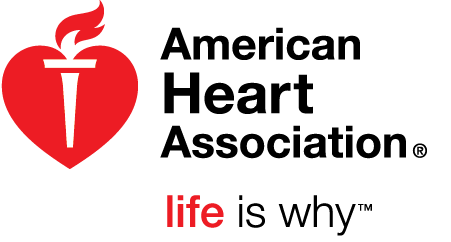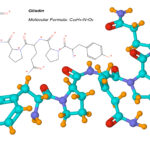High blood pressure should be treated earlier with lifestyle changes and in some patients with medication – at 130/80 mm Hg rather than 140/90 – according to the first comprehensive new high blood pressure guidelines in more than a decade. The guidelines are being published by the American Heart Association (AHA) and the American College of Cardiology (ACC) for detection, prevention, management and treatment of high blood pressure.
The guidelines were presented today at the Association’s 2017 Scientific Sessions conference in Anaheim, the premier global cardiovascular science meeting for the exchange of the latest advances in cardiovascular science for researchers and clinicians.
Rather than 1 in 3 U.S. adults having high blood pressure (32 percent) with the previous definition, the new guidelines will result in nearly half of the U.S. adult population (46 percent) having high blood pressure, or hypertension. However, there will only be a small increase in the number of U.S. adults who will require anti-hypertensive medication, authors said. These guidelines, the first update to offer comprehensive guidance to doctors on managing adults with high blood pressure since 2003, are designed to help people address the potentially deadly condition much earlier.
“Dropping the target blood pressure to 130/80 mm Hg will have a huge impact on death rates from cardiovascular disease in the next decade. This is the first set of hypertension guidelines in an era where the medications are generic and cheap and there should be no lack of access for people who need them,” Dr. John Bisognano, PhD, American Heart Association of Rochester spokesperson and cardiologist with UR Medicine Heart and Vascular said.
The new guidelines stress the importance of using proper technique to measure blood pressure. Blood pressure levels should be based on an average of two to three readings on at least two different occasions, the authors said.
High blood pressure accounts for the second largest number of preventable heart disease and stroke deaths, second only to smoking. It’s known as the “silent killer” because often there are no symptoms, despite its role in significantly increasing the risk for heart disease and stroke. Paul K. Whelton, M.B., M.D., M.Sc., lead author of the guidelines published in the American Heart Association journal, Hypertension and the Journal of the American College of Cardiology, noted the dangers of blood pressure levels between 130-139/80-89 mm Hg.
“You’ve already doubled your risk of cardiovascular complications compared to those with a normal level of blood pressure,” he said. “We want to be straight with people – if you already have a doubling of risk, you need to know about it. It doesn’t mean you need medication, but it’s a yellow light that you need to be lowering your blood pressure, mainly with non-drug approaches.”
Blood pressure categories in the new guideline are:
- Normal: Less than 120/80 mm Hg;
- Elevated: Top number (systolic) between 120-129 and bottom number (diastolic) less than 80;
- Stage 1: Systolic between 130-139 or diastolic between 80-89;
- Stage 2: Systolic at least 140 or diastolic at least 90 mm Hg;
- Hypertensive crisis: Top number over 180 and/or bottom number over 120, with patients needing prompt changes in medication if there are no other indications of problems, or immediate hospitalization if there are signs of organ damage.
The new guidelines eliminate the category of prehypertension, which was used for blood pressures with a top number (systolic) between 120-139 mm Hg or a bottom number (diastolic) between 80-89 mm Hg. People with those readings now will be categorized as having either Elevated (120-129 and less than 80) or Stage I hypertension (130-139 or 80-89).
Previous guidelines classified 140/90 mm Hg as Stage 1 hypertension. This level is classified as Stage 2 hypertension under the new guidelines. The impact of the new guidelines is expected to be greatest among younger people. The prevalence of high blood pressure is expected to triple among men under age 45, and double among women under 45 according to the report. “Damage to blood vessels begins soon after blood pressure is elevated,” said Whelton, who is the Show Chwan professor of global public health at Tulane University School of Public Health and Tropical Medicine and School of Medicine in New Orleans. “If you’re only going to focus on events, that ignores the process when it’s beginning. Risk is already going up as you get into your 40s.”
The guidelines stress the importance of home blood pressure monitoring using validated devices and appropriate training of healthcare providers to reveal “white-coat hypertension,” which occurs when pressure is elevated in a medical setting but not in everyday life. Home readings can also identify “masked hypertension,” when pressure is normal in a medical setting but elevated at home, thus necessitating treatment with lifestyle and possibly medications.
“People with white-coat hypertension do not seem to have the same elevation in risk as someone with true sustained high blood pressure,” Whelton said. “Masked hypertension is more sinister and very important to recognize because these people seem to have a similar risk as those with sustained high blood pressure.”
Other changes in the new guideline include:
- Only prescribing medication for Stage I hypertension if a patient has already had a cardiovascular event such as a heart attack or stroke, or is at high risk of heart attack or stroke based on age, the presence of diabetes mellitus, chronic kidney disease or calculation of atherosclerotic risk (using the same risk calculator used in evaluating high cholesterol).
- Recognizing that many people will need two or more types of medications to control their blood pressure, and that people may take their pills more consistently if multiple medications are combined into a single pill.
- Identifying socioeconomic status and psychosocial stress as risk factors for high blood pressure that should be considered in a patient’s plan of care.
The new guidelines were developed by the American Heart Association, American College of Cardiology and nine other health professional organizations. They were written by a panel of 21 scientists and health experts who reviewed more than 900 published studies. The guidelines underwent a careful systematic review and approval process. Each recommendation is classified by the strength (class) of the recommendation followed by the level of evidence supporting the recommendation. Recommendations are classified I or II, with class III indicating no benefit or harm. The level of evidence signifies the quality of evidence. Levels A, B, and C-LD denote evidence gathered from scientific studies, while level C-EO contains evidence from expert opinion.
The new guidelines are the successor to the Seventh Report of the Joint National Committee on Prevention, Detection, Evaluation and Treatment of High Blood Pressure (JNC7), issued in 2003 and overseen by the National Heart, Lung, and Blood Institute (NHLBI). In 2013, the NHLBI asked the AHA and ACC to continue the management of guideline preparation for hypertension and other cardiovascular risk factors.
Additional Resources:
- Downloadable multimedia including HD interviews with Dr. Paul Whelton and Dr. Joaquin Cigarroa is on the right column of the release link: https://newsroom.heart.org/news/high-blood-pressure-redefined-for-first-time-in-14-years-130-is-the-new-high?preview=92ced1fad41b056df4e6ae0f73a09db4
- Additional videos will be posted here after 2 p.m. PT/ 5 p.m. ET, Monday, Nov. 13,
- Spanish Release inlcuding an HD video interview with Dr. Joaquin Cigarroa, a member of the writing committee.
- After 2 p.m. PT/ 5 p.m. ET, Monday, Nov. 13, view the manuscript online at:
- Commentary by AHA president John Warner, M.D. is available at https://healthmetrics.heart.org/commentary/
- Data visualization of the impact of the new guidelines is available at https://healthmetrics.heart.org/data-visualization/
- Find high blood pressure management resources at www.heart.org/hbp.
- Follow AHA/ASA news on Twitter @HeartNews
The American Heart Association/American Stroke Association receives funding mostly from individuals. Foundations and corporations donate as well, and fund specific programs and events. Strict policies are enforced to prevent these relationships from influencing the association’s science content. Financial information for the American Heart Association, including a list of contributions from pharmaceutical and device manufacturers and health insurance providers are available at www.heart.org/corporatefunding.
About the American Heart Association
The American Heart Association, the world’s leading voluntary health organization devoted to fighting cardiovascular disease, is devoted to saving people from heart disease and stroke – the two leading causes of death in the world. We team with millions of volunteers to fund innovative research, fight for stronger public health policies, and provide lifesaving tools and information to prevent and treat these diseases. The Dallas-based association is the nation’s oldest and largest voluntary organization dedicated to fighting heart disease and stroke. To learn more or to get involved, call 1-800-AHA-USA1, visit heart.org or call any of our offices around the country. Follow us on Facebook and Twitter.
About the American College of Cardiology
The American College of Cardiology is the professional home for the entire cardiovascular care team. The mission of the College and its more than 52,000 members is to transform cardiovascular care and to improve heart health. The ACC leads in the formation of health policy, standards and guidelines. The College operates national registries to measure and improve care, offers cardiovascular accreditation to hospitals and institutions, provides professional medical education, disseminates cardiovascular research and bestows credentials upon cardiovascular specialists who meet stringent qualifications. For more, visit acc.org or follow @ACCinTouch on Twitter and Facebook.
For more information regarding the new guidelines, contact:
Jackie Mangione-Regional Director of Communications
585.967.7749 or Jackie.Mangione@heart.org











